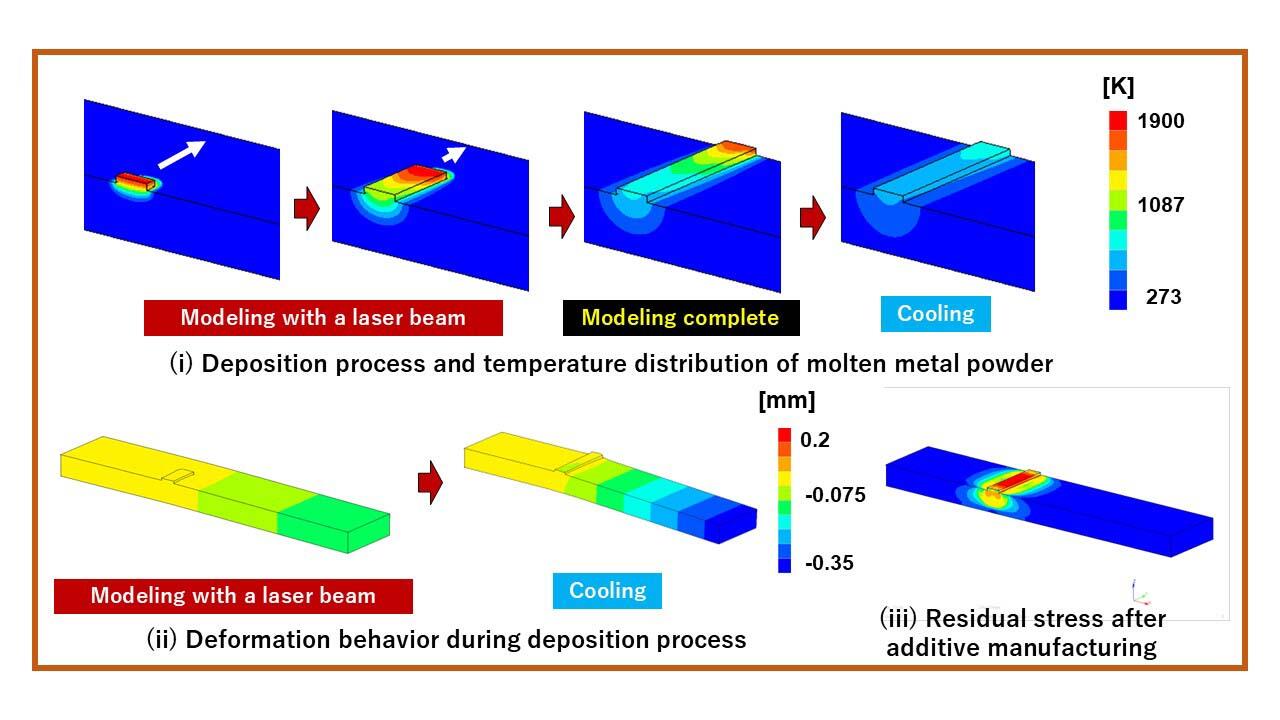Engineers at Tokyo University of Science (TUS) have developed a mathematical model to predict the performance of parts made with Directed Energy Deposition (DED) before they are even 3D printed.
Mechanical parts in industrial machinery and structures that develop thinning or cracks need to be replaced with new ones. In recent years, attempts to repair them have been considered, in order to improve industrial sustainability. So, repair technology for machines has been a hot topic of research and development. Conventional metal 3D-printed fabrication uses the surface of a mechanically laid powder bed that is irradiated with a laser or electron beam to melt the metal particles and fuse them. However, this method requires bulky fabrication equipment. Also, a large amount of metal powder is disposed after the fabrication process. However, laser-directed energy deposition (LDED) is a promising technology that overcomes the challenges. In this technique, metal powders are deposited at the focus of a laser beam, then melted and stacked.
The advantages of LDED are not only related to the compactness of the equipment, but also the significant reduction of metal powder waste. Furthermore, this technology enables in-situ metal powder fabrication in a 3D shape on the surface of a substrate. This means it can be used to repair machines made of metal as well!
A group of researchers, which include Professor Masayuki Arai from the Department of Mechanical Engineering, Faculty of Engineering, Tokyo University of Science (TUS), Japan, Mr. Toshikazu Muramatsu, also from TUS, and Dr. Kiyohiro Ito from Department of Mechanical and Electrical Engineering, Suwa University of Science, Japan, has, in collaboration with the Thermal Spray Technology Development Laboratory of TOCALO Co. Ltd., Japan, developed a repair technique using LDED.
“Using our technique, the surface shape of a metal structure can be completely restored on-site, and the disposal of the metal powder required for repair can be significantly reduced. However, the optimum forming conditions required for the widespread application of this technology in industry had to be hitherto determined by a trial-and-error process,” explains Prof. Arai, who has been actively involved in the research of damage mechanics and repair technology.
In a recent article published in Journal of Thermal Spray Technology on November 23, 2022, the researchers have devised a mathematical model of LDED that automatically generates a metal powder deposition region using a death-birth algorithm, eliminating the guesswork needed to optimize the production.
“The thermal radiation-thermal conduction model and the viscoplastic-thermoplastic constitutive model are applied to the stacked elements that constitute the deposited region, so that a wide range of state changes from melting to solidification of the deposited layer of metal powder can be faithfully simulated. By incorporating these models into a finite element analysis program, we have developed a new machining analysis system that has never been used before”, notes Prof. Arai.
The team numerically simulated the restoration process, and thus, predicted the forming process conditions, temperature distribution, deformation state, and residual stress distribution in advance and verified the findings through experiments. They found that the residual stresses in the deposited layer were much lower than those obtained via conventional repair processes.
This novel 3D machining numerical analysis system is a digital twin of the existing core machining technology based on the fusion of metal in the area to be repaired. The numerical analysis method developed here could be applied to various industrial applications in the future, such as planning the repair of cavitation thinning on the surface of a blade used in power plant’s circulating pump and devising a method for reducing residual deformation after repairing the thinning of the tip of a gas turbine’s rotor blade. Taken together, the features of automation and advance prediction of process conditions by the numerical machining analysis system make 3D metal layered metal fabrication by LDED repair technology more effective, with efficient resource management to improve its sustainability.
Find out more about the Tokyo University of Science at tus.ac.jp.
Subscribe to our Newsletter
3DPresso is a weekly newsletter that links to the most exciting global stories from the 3D printing and additive manufacturing industry.


























